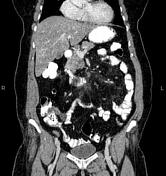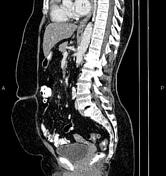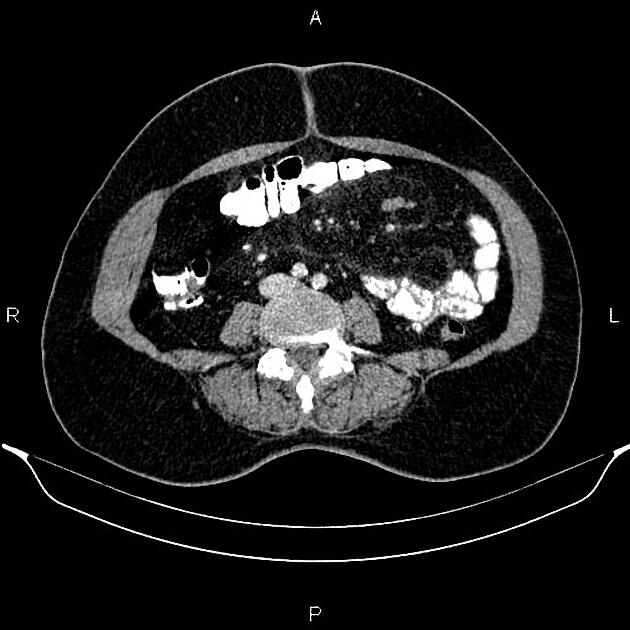Presentation
Abdominal pain and tenderness on physical exam.
Patient Data







Smudging of the fat planes surrounding the superior mesenteric vessels and their branches within the root of the small bowel mesentery, accompanied by multiple prominent mesenteric lymph nodes, is compatible with the misty mesentery sign.
In addition, a 25-mm unilocular mesenteric cyst is seen in the right lower quadrant.
The hepatic attenuation value is less than the spleen's, suggesting a fatty liver.
Degenerative changes, such as osteophytosis, are seen in the lumbar spine.
The L5 vertebra is sacralized.
Grade I spondylolisthesis of L4 on L5 is present with bilateral spondylolysis.
Case Discussion
Misty mesentery sign refers to the increased attenuation of the mesenteric fat, often accompanied by prominent mesenteric lymph nodes. Different processes can lead to the sign, including infiltration by inflammatory cells, edema, lymphatic accumulation, hemorrhage, tumor infiltration, and fibrosis.
Mesenteric panniculitis is the most common cause of misty mesentery and is an uncommon idiopathic disorder characterized by chronic, non-specific inflammation involving the adipose tissue of the bowel mesentery. On CT, the mesentery demonstrates a mass effect with a misty mesentery sign. It is usually accompanied by a fat halo sign that refers to the traversing mesenteric vessels and soft tissue nodules having a spared fat halo.
Mesenteric panniculitis cannot be diagnosed on CT without excluding many other possible causes of a misty mesentery and often needs follow-up.




 Unable to process the form. Check for errors and try again.
Unable to process the form. Check for errors and try again.